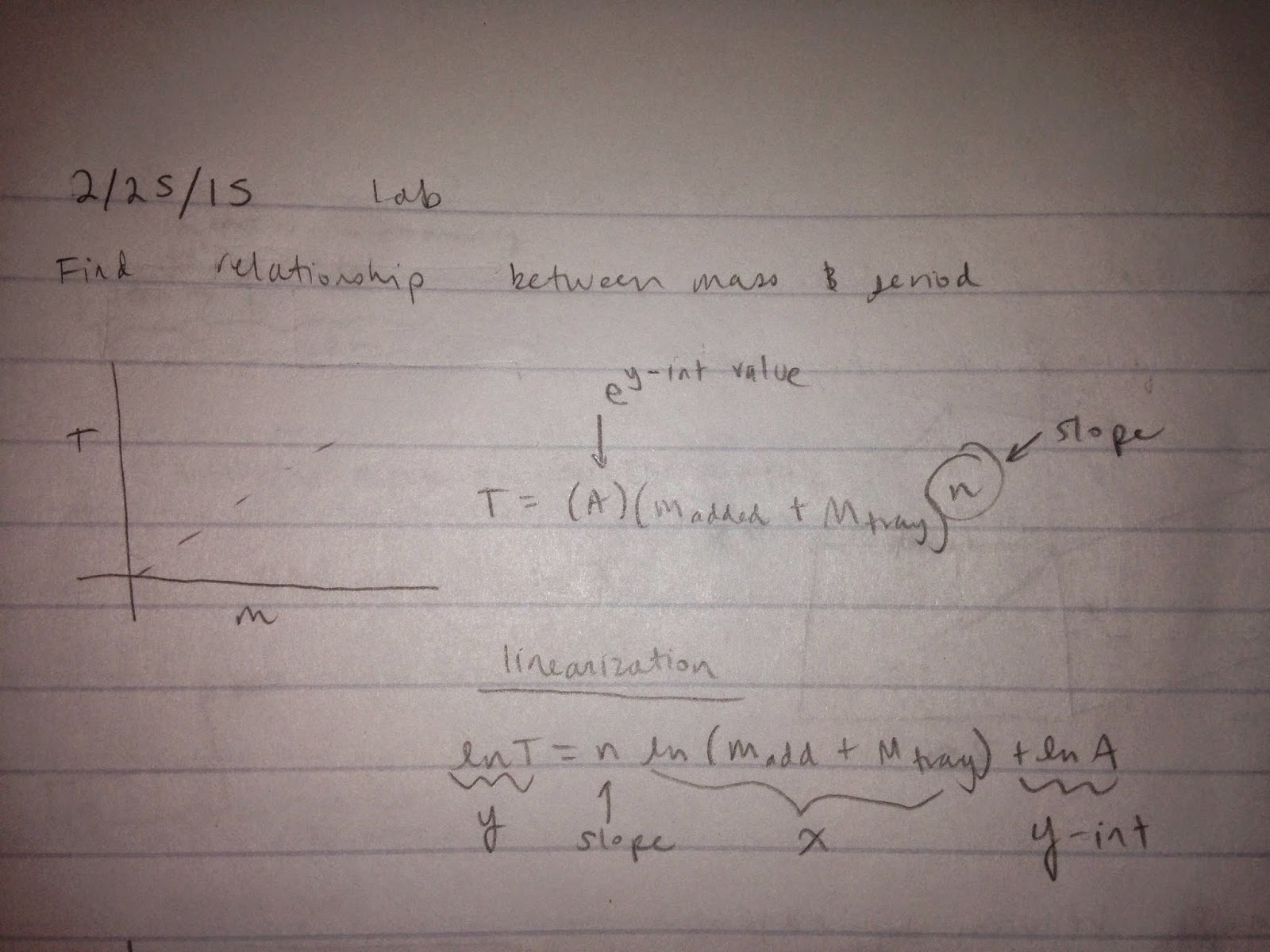The purpose of this lab was to find the relationship between mass and period using an inertial balance. We were required to input the measured periods of two unknown masses into a modeled power law type equation and compare their calculated masses with the values directly measured using a balance.
 |
The apparatus used was a photo gate attached to a pole, a c-clamp to secure the inertial balance onto the table, and a thin piece of tape attached to the inertial balance in order for the photo gate to measure various masses periods.
To find the relationship between mass and period, we guessed that period is related to mass by a power law type of equation T=A(m+Mtray)^n
Our first step was to record the period with no mass on the inertial balance, then record the period for every 100 grams added until reaching 800 grams. This measured data would help us solve for three unknowns A, Mtray, and n. By taking the natural logarithm on both sides of the power law equation we derived an equation very similar to y=mx+b. We plotted a graph of T vs. ln(m+Mtray) and created a parameter of what our mass of the tray should be in order to get a nice straight line and correlation coefficient value close to 1. To determine the mass of the two unknowns we needed a range of Mtray, which included a maximum and minimum value. These values were .280 kg (min) and .362 kg (max). By examining the slope and y-intercept of these two values, we were able to determine the values of A and n and model an equation to give us a range of masses for our unknowns.
Data Table
Screen Shot of T vs. ln(m+Mtray)
Minimum value for Mtray
The minimum value for Mtray was .280 kg. This yielded fit parameters of n= 0.6509 and a y-int= -0.4169
Maximum Value for Mtray
The maximum range value for Mtray was .362 kg. This yielded fit parameters of n= .07499 and a y-int= -0.4703
The main purpose of finding a range of mass values was because there is some uncertainty in our modeled equation and having a range, each value of Mtray would have its own y-intercept and slope value to give us sufficient curve fits.
Derivation of Modeled equations
Range of calculated mass values
Unknowns
Water Bottle
Period .566600 s
Max value .515 kg
Min value .512 kg
Actual mass .469 kg
Tape Roll
Period .370272 s
Max value .136 kg
Min value .132 kg
Actual mass .125 kg
In this lab, an inertial balance was set up to find the relationship between mass and period. The periods of various known masses were used in order to model an equation so that we could find the unknown mass of two objects and compare them with a measured scale mass. A minimum and maximum value for Mtray were recorded along with its parameters, which both needed a correlation coefficient as close to the value of 1 as possible, in order to give us a somewhat accurate range of mass for our two unknowns. Unfortunately, our modeled equation did not yield good results. Our calculated mass and measured mass were somewhat off. This could have been due to various reasons such as the uncertainty of our equation and what we ignored such as placement of mass on the inertial balance and the amount of tape used to hold down our unknowns could have deviated the actual period the photogate measured.
|








No comments:
Post a Comment